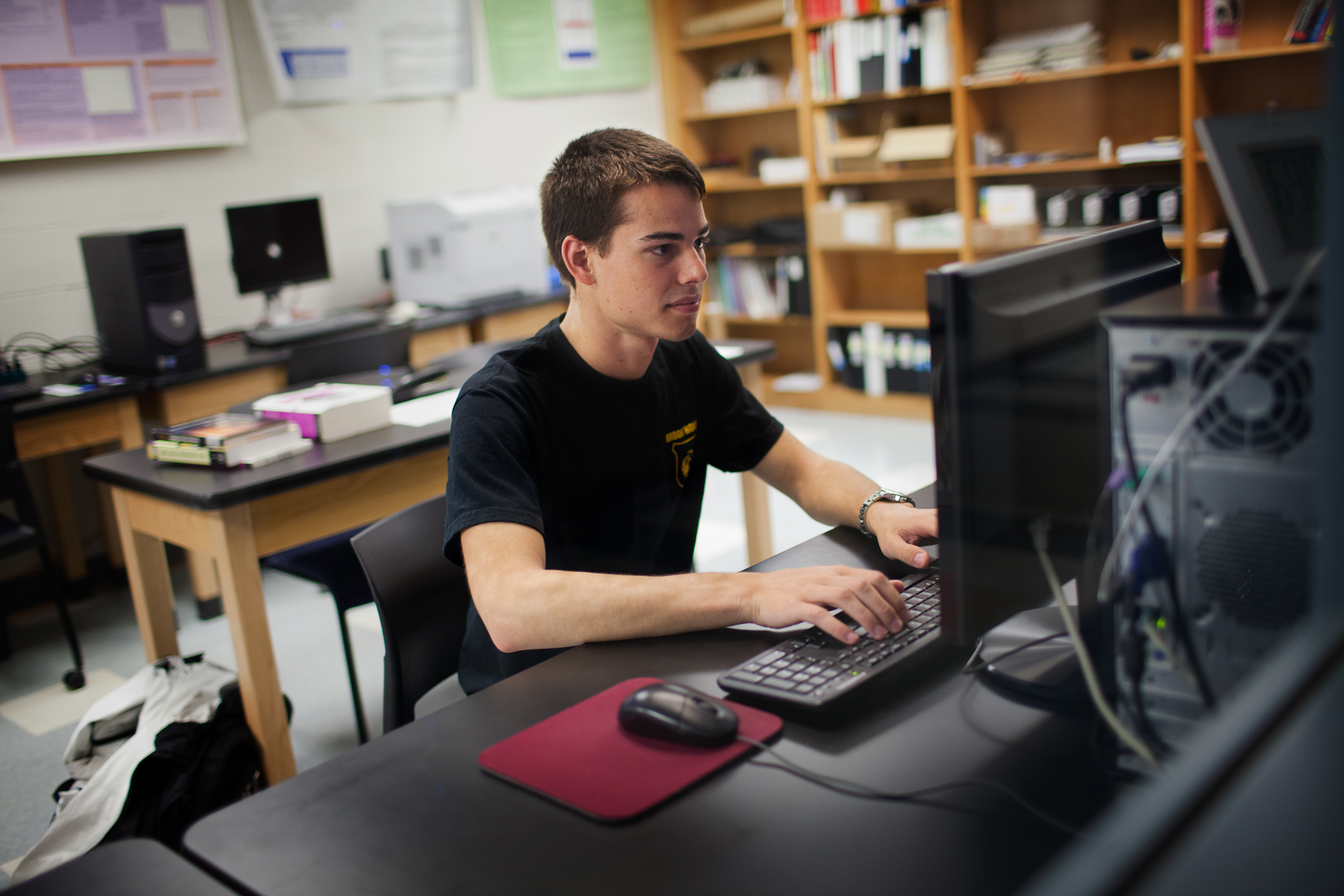Staff Writer
This past May Jack Madden ’14 discovered a pulsar (portmanteau of pulsating star), which is a large, dense neutron star that has a very strong magnetic field. Madden was working as a Hackman Scholar at F&M over the summer, doing research under Fronefield Crawford, associate professor of Astronomy.
Madden is the first F&M student to discover a pulsar.
“It’s really rare for an undergraduate to make this type of discovery,” Madden said.
Madden, who is an astrophysics major, began working with Crawford during his first semester of freshman year.
Crawford is currently working on an ambitious pulsar survey of a nearby galaxy in conjunction with professors at West Virginia and Murray State University.
Madden explained that a pulsar is a neutron star.
“A neutron star is sometimes what is left over after a high mass star has exploded, leaving behind a core of degenerate matter,” Madden said. “Neutron stars are extremely dense and are essentially one step away from a black hole.”
He also added that pulsars spin very rapidly, with a spin period on the order of milliseconds. In comparison, Earth has a spin period of 24 hours. Pulsars also have strong magnetic fields that are accelerating protons and electrons off the surface of the star, creating beams of
radiation.
Madden compares the emission of these beams to a lighthouse because as the pulsar spins the emitted beam of electromagnetic radiation can only be seen when the beam is point ing towards Earth, much like how the light of a lighthouse can only be seen when it is directly pointing at its target.
According to Madden, there are approximately 2,000 known pulsars, but only 1 percent of them are outside our galaxy.
The pulsar survey process, Madden explained, takes years of work and only 20 percent of the survey has been done thus far.
The data Madden was using came from the 64-meter Parkes Radio Telescope in Australia. Using the Beowulf cluster, a networking technique that allows high-performance parallel computing, the raw data from the telescope is processed. The cluster works by finding pulsar-like signals and then amplifying them so they can be picked out from the noise.
Madden individually looks through all the candidates produced by this processing. He then classifies each candidate as a potential pulsar or radio frequency interference.
“Only about .001 percent of the candidates are actually interesting and make it to the next round of processing,” Madden said.
Madden then runs a targeted search for these interesting candidates.
“This is pretty exciting, since there are very slim chances that you’ll find something new and exciting like this new pulsar.” Madden said. “I look for anything out of the ordinary, and after a few years of research, I finally found something.”
When Madden first looked at the pulsar he discovered, he assumed it was a pulsar that had previously been detected.
“It was not really that exciting at first, since I knew there were already a bunch of known pulsars in the area, if I found a plot that stood out as much as this one did, I would immediately think it had already been discovered,” Madden said.
Madden then checked to see if the pulsar had been found in the survey he was working on, and it was not there. He also checked an online database and the pulsar was not present there either.
He then emailed Crawford explaining that he may have found a pulsar. His professor emailed a second professor who confirmed it was a pulsar that had not been previously discovered.
“The excitement for this new discovery had been delayed until this point,” Madden said.
Madden’s research will contribute to a paper Crawford is working on with professors from West Virginia and Murray State Universities.
After F&M, Madden plans on going to graduate school for astrophysics where he could continue his study of pulsars .
“It just goes to show how awesome F&M is and how good the research programs are here,” Madden said. “I am also very thankful for the Hackman Scholarship, which allowed me to work here this summer.”
Questions? Email Shira at skipnees@fandm.edu.
